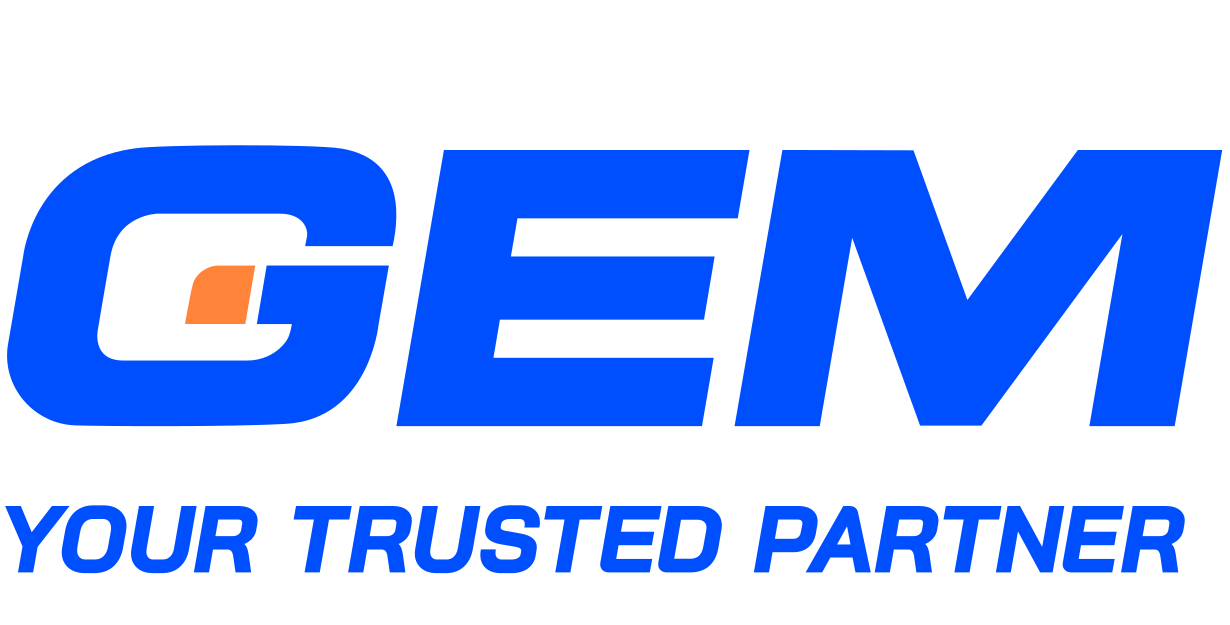Contents
- Enterprise service bus – Definitions, key features, and more
- The relation between enterprise service bus and service-oriented architecture (SOA)
- Business benefits of enterprise service bus
- The importance of enterprise service bus in digital transformation
- Closing remark
- Elevate your company’s system with ESB today!
In today’s complex IT landscape, seamless integration and efficient communication between diverse systems are highly important for business success.
An enterprise service bus (ESB) is a critical architectural pattern that facilitates these needs, acting as a centralized software component to integrate various applications. This overview delves into the essential aspects of this approach, including its definitions, key features, components, and the significant role it plays in modern digital transformation.

Enterprise service bus – Definitions, key features, and more
To understand the importance of an ESB in modern IT infrastructure, let’s explore its definitions, how it works, and the popular platforms in the market.
Defining enterprise service bus
An ESB is a centralized software architecture that facilitates integration between various applications. It manages data model transformations, connectivity, message routing, and protocol conversions, and can coordinate multiple request handling. These capabilities are provided as reusable service interfaces for new applications to utilize.
Think of this architecture as a city’s bus system. Just as buses transport people across different parts of a city, an ESB transports data and messages across different parts of a company’s IT systems.
How does an enterprise service bus work?
The key components of ESB architecture are:
Endpoints
Endpoints serve as the entry and exit points for data flowing through it.
A specific address or identifier uniquely identifies each endpoint and can be implemented using various technologies, such as web service interfaces, message queues, or FTP servers.
Endpoints can handle different message formats, including XML, JSON, and binary data. This versatile endpoint architecture enables the architecture to seamlessly integrate a wide array of systems and applications.

Adapter
In this architecture, the adapter is responsible for translating messages between different formats and protocols, ensuring the recipient software applications can properly interpret them. Additionally, it often includes functionalities such as message logging, monitoring, authentication, and error handling to enhance communication reliability and security.
Bus
The bus is the central component of an ESB since it facilitates the process of exchanging between endpoints. It routes messages based on a set of rules or policies defined by criteria such as message type, content, or destination.
These policies are configurable to cater to the needs of intricate business processes. The bus employs various communication protocols, including HTTP, JMS, and FTP, to interact with endpoints.
Here’s how the bus operates:
- It receives a message at one endpoint.
- It identifies the destination endpoints by applying business policy rules.
- It processes the message and forwards it to the intended endpoint.
For instance, if the bus receives an XML file from an application at endpoint A, it determines that this file needs to be sent to endpoints B and C. Endpoint B requires the data in JSON format, while endpoint C needs it to be sent via an HTTP PUT request. The adapter converts the XML file to JSON for endpoint B, and the bus sends it accordingly. Simultaneously, the bus performs the HTTP request with the XML data for endpoint C.

Popular enterprise service bus platforms
As of 2024, several popular ESB platforms stand out in the market due to their features, performance, and user satisfaction. Here are some of the leading platforms selected based on their market share, user satisfaction, and the range of features they offer.
IBM Integration Bus (now IBM App Connect Enterprise): This platform is renowned for its robust integration capabilities, which allow seamless connectivity between diverse applications. It supports a wide range of protocols and data formats, making it a versatile choice for enterprise integration needs.
Mule ESB (part of MuleSoft’s Anypoint Platform): This is a popular open-source solution known for its lightweight and flexible architecture. It enables the integration of on-premises and cloud-based applications and data, supporting a variety of integration patterns.
Microsoft Azure Service Bus: This is a cloud-based, fully managed messaging service that facilitates the connection of applications, devices, and services. It ensures reliable and scalable communication, making it ideal for large-scale enterprise integrations. This service is recognized for its robustness and efficiency in managing extensive integration requirements.
TIBCO Cloud Integration: TIBCO’s solution offers comprehensive integration capabilities with support for various protocols and data formats. It provides powerful tools for monitoring, logging, and managing integrations, making it a strong contender in the market
WSO2 Enterprise Service Bus: This platform is designed for high performance and low footprint, offering excellent interoperability. It is well-suited for organizations looking for an efficient and scalable ESB solution.
Software AG’s webMethods Integration Platform: This platform provides robust integration capabilities and supports complex business processes, making it ideal for large enterprises with intricate integration needs.

The relation between enterprise service bus and service-oriented architecture (SOA)
ESB serves as the backbone that ensures seamless communication and integration across diverse services, making it an indispensable component in SOA’s framework. This synergy facilitates a more efficient and flexible IT infrastructure, enhancing the ability to adapt to evolving business needs and technological advancements. However, it’s important to note that it can also become a point of vulnerability.
As a facilitator
An ESB is an essential component of SOA – a framework that allows different services to communicate and work together over a network. It serves as the key facilitator within SOA, managing the communication and data exchange between these services to ensure seamless integration and operation.
So, can you implement SOA without an ESB? It is feasible but would be equivalent to managing several scattered services. Each application owner would need to establish direct connections to the services they require and handle the necessary data transformations to conform to each service interface. This approach demands substantial effort and results in a complex web of point-to-point connections, making it difficult to maintain and scale over time.

As the potential failure point
Despite being a key factor in managing and routing services in SOA, ESB can also be considered a risk point in the SOA model for several reasons.
First, the possibility of it becoming the single point of failure (SPOF). ESB, being the central hub that manages the communication and integration between various systems and applications, becomes critical to the functioning of the entire IT infrastructure. If the architecture experiences a failure or outage, it can disrupt the flow of data and communication across the network. The failure can also impact the availability of all connected systems and services since other systems rely on the ESB to route messages, handle data transformations, and ensure the smooth functioning of their interactions.
Second, its complexity. ESB typically is complex and powerful software, which may require complex configuration and management. Deploying and maintaining it can increase costs and require specialized expertise.
Third, the risk of a vendor lock-in, which means individuals or organizations feel compelled to continue using a product or service, regardless of its quality, because switching to another one is not feasible or practical. Many organizations use a specific ESB, which may lead to constraints with the vendor. This can pose issues for the scalability and flexibility of the system.
Business benefits of enterprise service bus
What benefits can businesses expect from leveraging this approach in application integration?
Driving business efficiency
ESB platforms streamline the communication between disparate systems within an organization, significantly reducing redundancies and inefficiencies. By automating data transfer and synchronization across systems, it minimizes manual interventions and errors, which in turn accelerates workflows and reduces operational costs.
For instance, it can automate the data flow between a customer relationship management (CRM) system and a supply chain management system, ensuring that sales orders are automatically updated, leading to faster order processing and fulfillment.
Improved visibility and control
With an ESB, organizations can oversee data and service flows across various applications so that they can swiftly detect and address any issues that may occur. This helps organizations ensure their applications are available, reliable, and secure.

Enhancing scalability
One of the key strengths of ESB is its ability to scale business operations efficiently as organizational needs grow. By providing a flexible connection framework, ESB allows companies to easily add new services or integrate with external systems without the need for extensive and costly system reconfigurations. Since ESB can transform and route messages across different applications regardless of the format or protocol, integrating new systems doesn’t require extensive changes to existing applications.
This means businesses can expand their operations, incorporate new technologies, or enter new markets more smoothly and with reduced IT overhead.
The importance of enterprise service bus in digital transformation
ESB plays a central role in fostering and facilitating digital transformation because it empowers businesses to adapt quickly to evolving technologies and leverage new digital opportunities.
By reducing the complexity and overhead associated with IT integrations, ESB allows organizations to focus more on innovation rather than maintenance. Companies can experiment with new technologies, such as Artificial intelligence and IoT, by integrating these innovations into their existing IT landscape through the ESB, fostering a culture of continuous improvement and experimentation.
Another aspect of the DX journey that ESB supports is customer experience. ESB helps deliver a smooth, consistent customer experience across various channels by ensuring that all customer-facing systems are interconnected and communicate in real time. This is critical for providing personalized experiences and quick service responses, which are key to customer satisfaction and loyalty.

Closing remark
In conclusion, the ESB is a conduit for seamless integration, communication, and orchestration of diverse systems and applications. Its transformative potential in driving digital innovation and enhancing customer experiences, thus, cannot be overstated. By empowering businesses to navigate the complexities of digital transformation with agility and efficiency, ESB paves the way for organizations to thrive in today’s rapidly evolving digital landscape.
Elevate your company’s system with ESB today!
GEM Corporation has completed dozens of successful ESB-related projects. Let’s talk and see how our expertise can make a valuable contribution to your digital initiatives!






